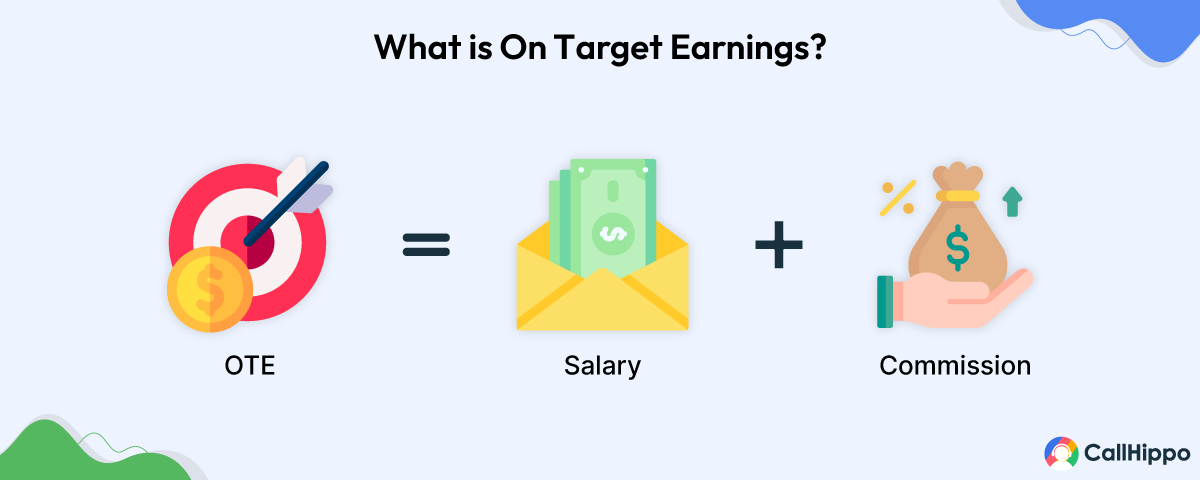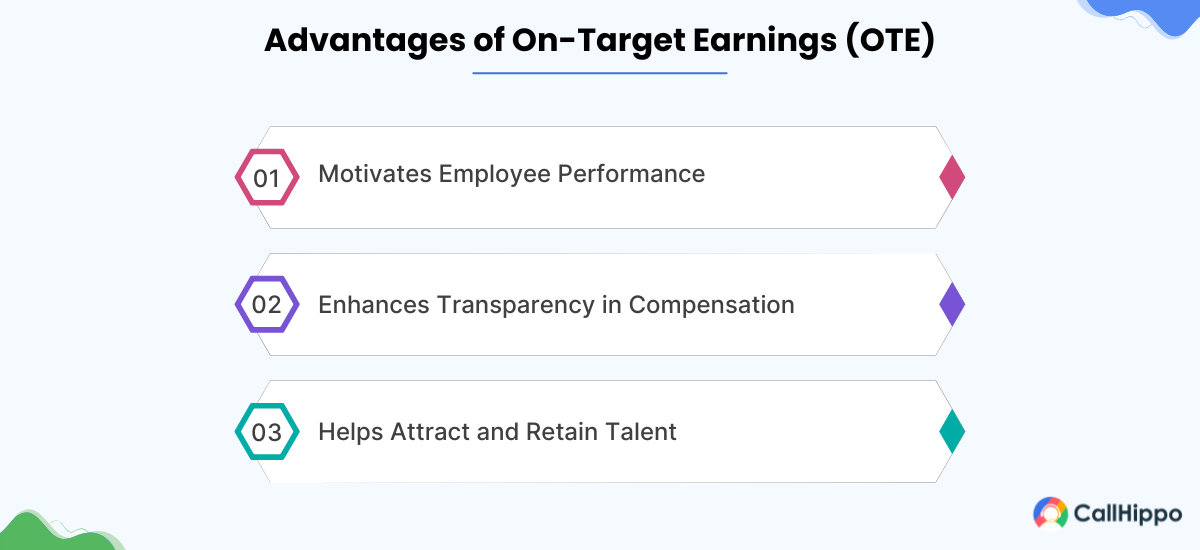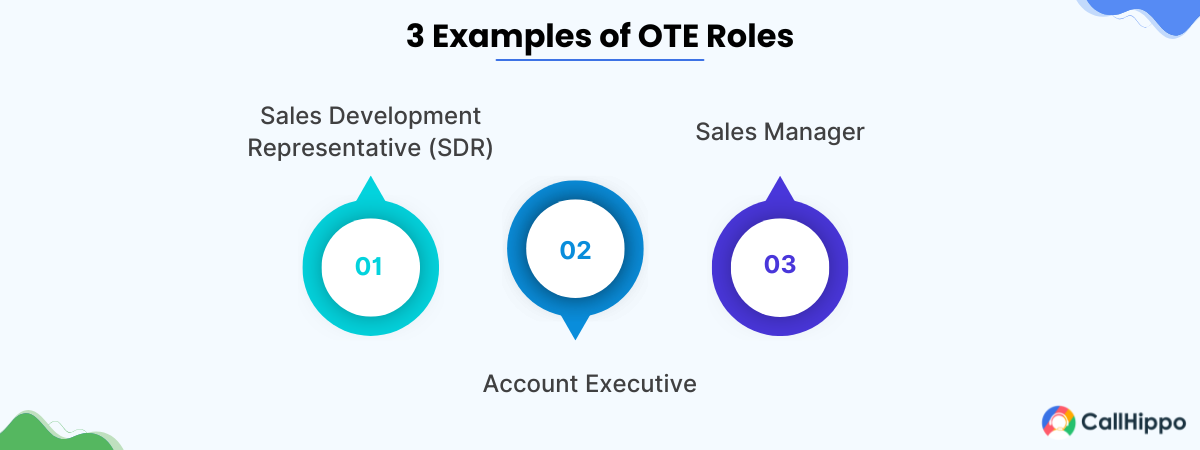In performance-driven industries, especially sales, employees are often motivated by a compensation structure that ties a significant portion of their pay to achieving specific goals. This structure is known as on-target earnings (OTE), and it plays a crucial role in setting expectations for both employers and employees.
In this article, we’ll explore what on-target earnings (OTE) means, how it’s calculated, and why it benefits both the individual and the organization.
What Is On-Target Earnings (OTE)?
On-target earnings (OTE) is a compensation model commonly used in sales and performance-driven roles. It combines two main components: a base salary and a variable component, typically performance-based bonuses, commissions, or incentives. The on target earnings definition helps employers set clear expectations for their employees, aligning their compensation with performance outcomes.
For example, a salesperson with a total on-target earnings target of $135,000 would earn this amount if they meet or exceed their sales targets. This target compensation is usually divided into a guaranteed base salary and the variable part tied to performance.
The concept of on-target earnings (OTE) is not just about motivating employees. It’s also about creating a performance-oriented culture where success is recognized and rewarded.

Benefits of On-Target Earnings
The introduction of an on-target earnings (OTE) compensation structure can offer multiple advantages for both employees and employers. Below are some of the key benefits:

1. Motivates Employee Performance
When employees’ pay is directly tied to performance, they are more likely to be motivated to hit and exceed their goals. On target earnings sale commission plans, in particular, incentivize individuals to push themselves further, knowing that surpassing targets results in greater financial rewards.
Take, for instance, a sales executive with an on-target earnings (OTE) target of $100,000. If they surpass their sales quota, they earn a larger commission, making them more motivated to exceed expectations. With performance-driven pay, employees feel empowered to go the extra mile, which leads to increased productivity and operational efficiency with higher revenue for the business.
2. Enhances Transparency in Compensation
Having a clear on-target earnings (OTE) structure enhances transparency in compensation. Employees can easily understand how their pay is calculated and what they need to do to achieve their earning potential. This clarity reduces confusion and fosters trust between the employer and employee.
A well-structured OTE model shows employees exactly what they will earn based on their performance, which builds trust and sets clear expectations. If an organization doesn’t use an OTE structure, employees might feel unsure about their pay potential, leading to dissatisfaction or disengagement.
3. Helps Attract and Retain Talent
In competitive industries, offering an attractive on-target earnings package can make all the difference in attracting top talent. High performers are drawn to roles where they can earn significant commissions, bonuses, or other incentives. Similarly, OTE structures help retain top-performing employees by offering them a rewarding compensation plan that encourages them to stay and grow within the organization.
A effective sales onboarding process combined with an attractive OTE package signals to potential candidates that the company values results and rewards employees for their hard work. This can help organizations secure the best talent, particularly in sales and similar fields where performance directly impacts company success.
What Is Included in OTE?
Understanding the components of on-target earnings (OTE) helps both employees and employers better navigate compensation expectations. OTE typically includes two major elements: the base salary and the variable pay.
1. Base Salary
The base salary is the fixed part of the compensation, which is guaranteed regardless of performance. This component ensures employees have a stable income. For example, a salesperson with a total on-target earnings structure may have a $70,000 base salary, meaning this amount is paid to them irrespective of how well they perform against sales targets.
2. Variable Pay (commission/bonus)
The variable pay component is based on performance, and it often includes sales commissions or performance bonuses. This pay structure allows employees to earn more by surpassing their targets. For example, if an employee’s on-target earnings (OTE) target is $135,000, the $70,000 base salary is combined with an additional $65,000 in commission based on performance.
The variable portion of OTE is designed to motivate employees to meet and exceed their performance goals. The more an employee achieves, the higher their earnings. Accurate sales forecasting methods help set realistic targets, ensuring the variable pay component remains both motivating and achievable. For companies, this compensation model helps align employee performance with organizational goals, fostering a productive and goal-oriented workplace.
How to Calculate OTE?
Calculating on-target earnings (OTE) involves a few straightforward steps that help employees understand how their compensation will be structured. Below is a breakdown of how OTE is typically calculated:
- Annual Base Salary + Annual Commission at 100% Quota Attainment = On-Target Earnings
Step 1: Determine The Base Salary
The first step in calculating on-target earnings (OTE) is to determine the base salary, which is the fixed portion of the employee’s compensation. This is the amount an employee earns regardless of their performance or sales.
For instance, an employee with a base salary of $70,000 is guaranteed to earn this amount annually, regardless of how well they perform in meeting sales targets. The base salary provides financial stability for the employee while also serving as the foundation for their overall OTE calculation when performance-based bonuses are added.
Step 2: Set Sales Quotas
The next step is to set specific sales quotas or performance targets that the employee needs to achieve to earn the variable portion of their compensation. These quotas should be both challenging and realistic, motivating employees to perform at their best while being achievable.
For example, a salesperson might need to generate $500,000 in revenue or secure 50 new clients to qualify for a commission. The sales quotas provide a clear and measurable goal that drives performance and helps both the employee and employer track progress toward earning the full OTE.
Step 3: Add Base Salary + Variable Pay
Once the base salary and sales quotas are established, the final step in calculating OTE is to add the variable pay (such as commissions or bonuses) to the base salary. For example, if an employee has a base salary of $70,000 and the potential commission from meeting sales targets is $65,000, the total on-target earnings (OTE) would be $135,000.
This total amount reflects the full earnings potential of the employee, providing a clear incentive to meet and exceed performance goals. The OTE calculation motivates employees by clearly linking compensation with performance outcomes.
Capped vs. Uncapped OTE
In some organizations, the on-target earnings (OTE) structure may have a cap, while in others, it may be uncapped. Here’s an overview of both structures:
Capped OTE places a maximum limit on the amount an employee can earn. This cap can be frustrating for high performers who may feel that they are not being fully rewarded for their efforts. For instance, an employee might have an OTE of $120,000, but once they reach this cap, they cannot earn more, regardless of their performance.
Uncapped OTE offers unlimited earning potential. There is no cap on how much employees can earn beyond their targets. This structure is motivating for employees because it rewards overperformance.
Why Is Uncapped OTE More Motivating?
- Uncapped OTE is motivating because it allows employees to earn more as they exceed their targets. For example, a salesperson with a total on target earnings target of $100,000 may earn an additional commission if they surpass their sales quota, providing them with a financial incentive to push beyond expectations.
Examples of OTE Roles
Here are a few examples of roles where on-target earnings (OTE) structures are commonly used:

1. Sales Development Representative (SDR)
Sales Development Representatives (SDRs) play a crucial role in the sales process by qualifying leads and setting up meetings for Account Executives. Their primary goal is to generate new sales opportunities through research, outreach, and qualification of prospects. Using the right cold calling software can help sales development representatives connect with more prospects.
SDRs typically have a base salary with a performance-based bonus tied to the number of qualified leads they generate or meetings they set. For example, if an SDR meets or exceeds lead-generation targets, they earn additional incentives, motivating them to continually improve their results and contribute to the overall success of the sales team.
2. Account Executive
Account executives are responsible for closing deals and managing client relationships. They take qualified leads provided by SDRs and work to convert them into customers by negotiating contracts and finalizing sales. Their on-target earnings (OTE) typically consist of a base salary plus performance-based commissions.
For example, an account executive may have a base salary of $100,000, with $50,000 in commissions tied to sales targets. The more deals they close and the higher their revenue, the greater their commission, creating a strong incentive to meet or exceed sales goals.
3. Sales Manager
Sales Managers oversee a team of salespeople, guiding them in achieving sales quotas and driving performance. They play a leadership role by setting goals, providing coaching, and ensuring the team is motivated and aligned with organizational objectives. A sales manager’s total on-target earnings (OTE) usually consists of a base salary plus team performance bonuses.
In some cases, they may also receive individual commissions based on their team’s overall success in hitting targets. This compensation structure encourages sales managers to focus not only on their own performance but also on developing and mentoring their team to achieve collective goals.
Conclusion
On-target earnings (OTE) is a powerful compensation structure that motivates employees, fosters transparency, and drives performance. After understanding the on-target earnings definition and recognizing its benefits, both employers and employees can achieve their goals and enhance organizational success.
Whether you’re a salesperson, sales manager, or employer, implementing an OTE structure helps align financial rewards with desired performance outcomes.
FAQs
1. What is the difference between OTE and OTC?
OTE refers to on-target earnings, while OTC (on-target commissions) refers solely to the commission part of an employee’s compensation.
2. What does OTE mean in salary?
OTE refers to the total amount an employee can earn by achieving their performance targets, combining both the base salary and variable pay.
3. How is OTE different from a bonus?
OTE includes both fixed and variable pay, while a bonus is typically a one-time reward based on performance or specific achievements.
4. What does 200k OTE mean?
200k OTE means that an employee has the potential to earn $200,000 by achieving their performance targets, including both their base salary and variable pay.

Subscribe to our newsletter & never miss our latest news and promotions.









